Scientific name Fusarium | Higher classification Nectriaceae | |
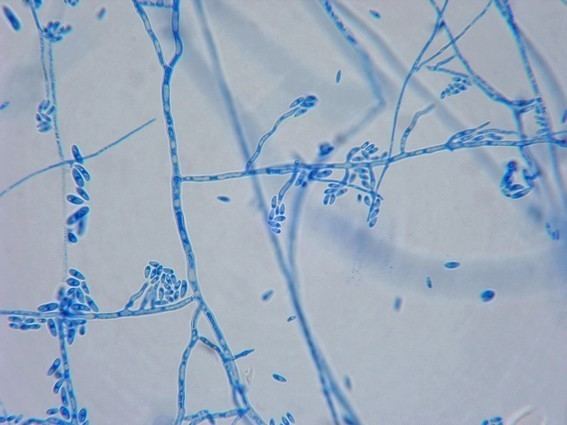 | ||
Lower classifications Fusarium oxysporum, Fusarium oxysporum fsp lycop, Fusarium proliferatum, Fusarium subglutinans, Fusarium sporotrichioides | ||
Sudden leaf drop in vanda orchids fusarium a lethal fungal infection of stem and roots
Fusarium /fjuˈzɛəriəm/ is a large genus of filamentous fungi, part of a group often referred to as hyphomycetes, widely distributed in soil and associated with plants. Most species are harmless saprobes, and are relatively abundant members of the soil microbial community. Some species produce mycotoxins in cereal crops that can affect human and animal health if they enter the food chain. The main toxins produced by these Fusarium species are fumonisins and trichothecenes.
Contents
- Sudden leaf drop in vanda orchids fusarium a lethal fungal infection of stem and roots
- Contact lenses and fusarium keratitis fungus
- Taxonomy
- Subdivision
- Species
- Etymology
- Pathogen
- In humans
- Use as human food
- Biological warfare
- References
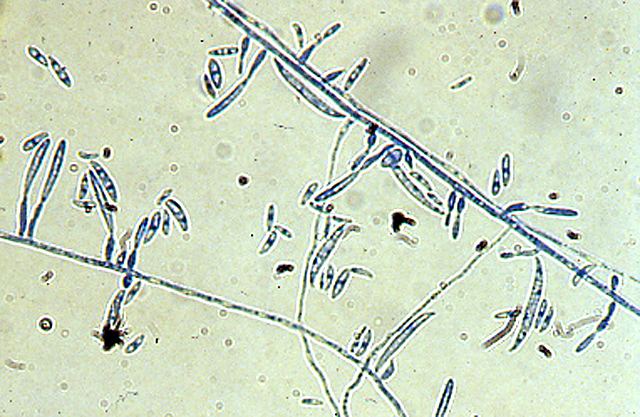
The name of Fusarium comes from Latin fusus, meaning a spindle.
Contact lenses and fusarium keratitis fungus
Taxonomy
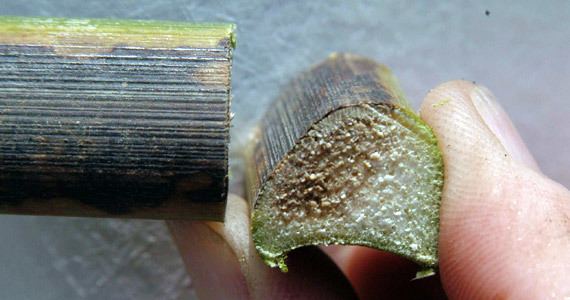
The taxonomy of the genus is complex. A number of different schemes have been used, and up to 1,000 species have been identified at times, with approaches varying between wide and narrow concepts of speciation ('lumpers' and 'splitters').
Phylogenetic studies indicate seven major clades within the genus.
Subdivision
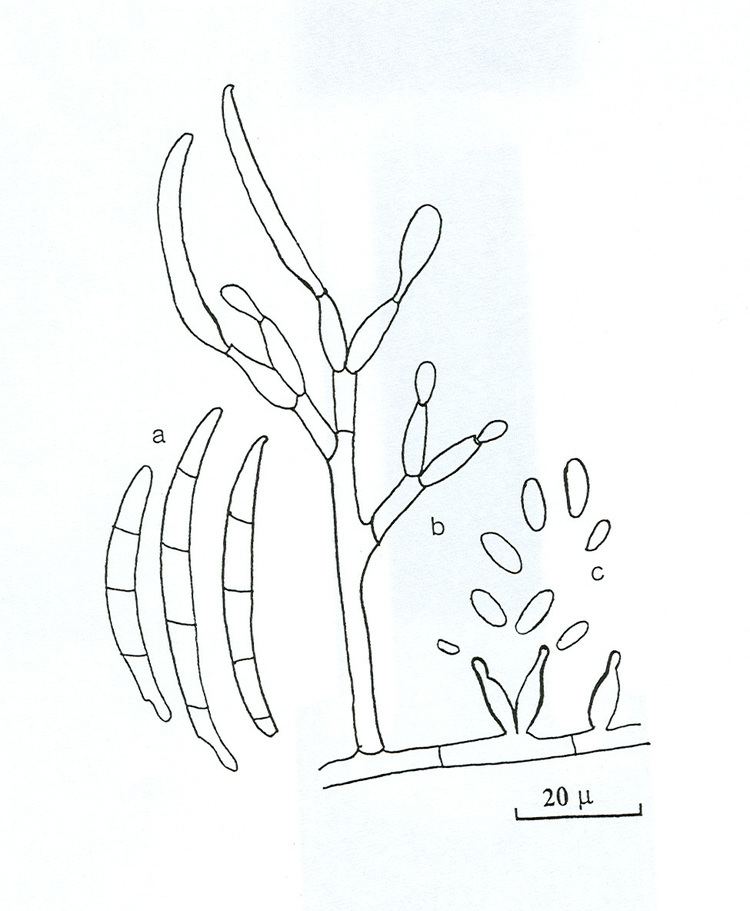
Various schemes have subdivided the genus into subgenera and sections. There is a poor correlation between sections and phylogenetic clades.
Sections previously described include;
Species
Selected species include;
Etymology
The name of Fusarium comes from Latin fusus, meaning a spindle.
Pathogen
The genus includes a number of economically important plant pathogenic species.
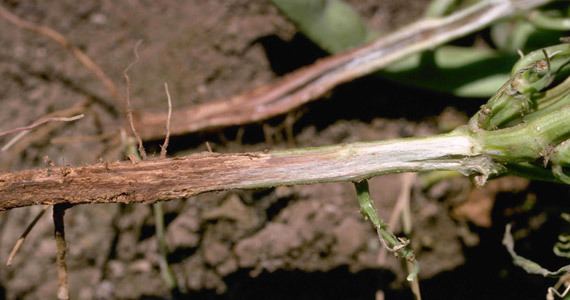
Fusarium graminearum commonly infects barley if there is rain late in the season. It is of economic impact to the malting and brewing industries, as well as feed barley. Fusarium contamination in barley can result in head blight, and in extreme contaminations, the barley can appear pink. The genome of this wheat and maize pathogen has been sequenced. F. graminearum can also cause root rot and seedling blight. The total losses in the US of barley and wheat crops between 1991 and 1996 have been estimated at $3 billion.
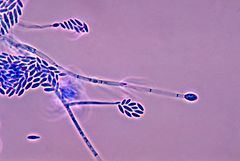
Fusarium oxysporum f.sp. cubense is a fungal plant pathogen that causes Panama disease of banana (Musa spp.), also known as fusarium wilt of banana. Panama disease affects a wide range of banana cultivars, which are propagated asexually from offshoots and therefore have very little genetic diversity. Panama disease is one of the most destructive plant diseases of modern times, and caused the commercial disappearance of the once dominant Gros Michel cultivar. A more recent strain also affects the Cavendish cultivars used as a substitute for Gros Michel. It is considered inevitable that this susceptibility will spread globally and commercially wipe out the Cavendish cultivar, for which there are currently no acceptable replacements.
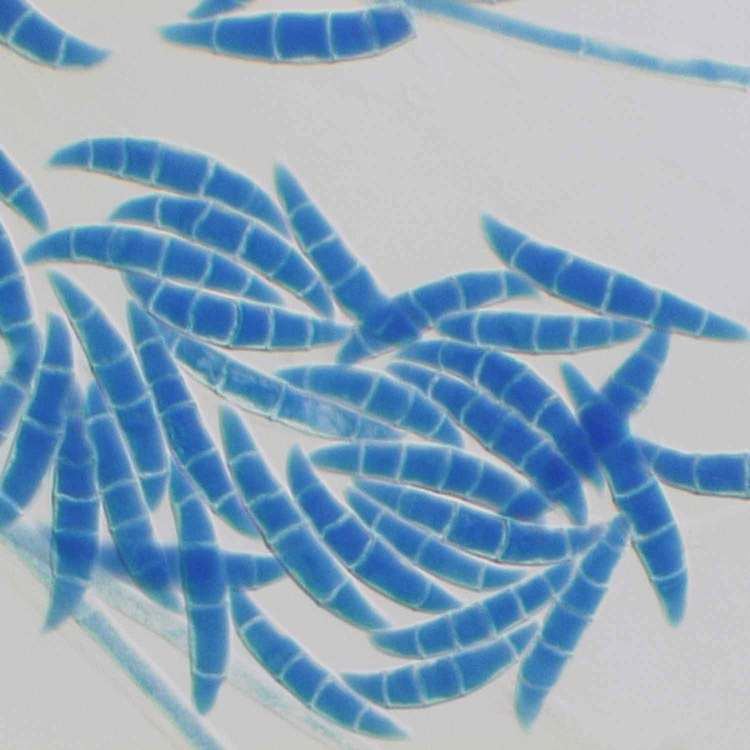
Fusarium oxysporum f. sp. Narcissi causes rotting of the bulbs (basal rot) and yellowing of the leaves of daffodils (Narcissi).
In humans

Some species may cause a range of opportunistic infections in humans. In humans with normal immune systems, fusarial infections may occur in the nails (onychomycosis) and in the cornea (keratomycosis or mycotic keratitis). In humans whose immune systems are weakened in a particular way, (neutropenia, i.e., very low neutrophils count), aggressive fusarial infections penetrating the entire body and bloodstream (disseminated infections) may be caused by members of the Fusarium solani complex, Fusarium oxysporum, Fusarium verticillioides, Fusarium proliferatum and, rarely, other fusarial species.
Use as human food
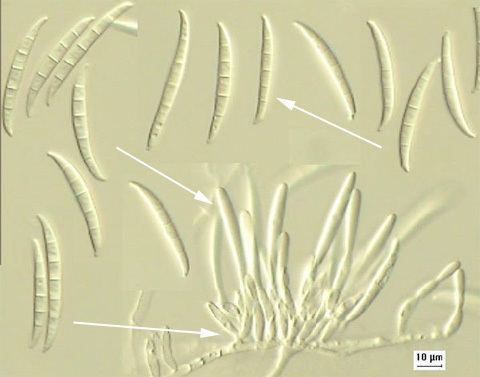
Fusarium venenatum is produced industrially for use as a human food by Marlow Foods, Ltd., and is marketed under the name Quorn in Europe and North America.
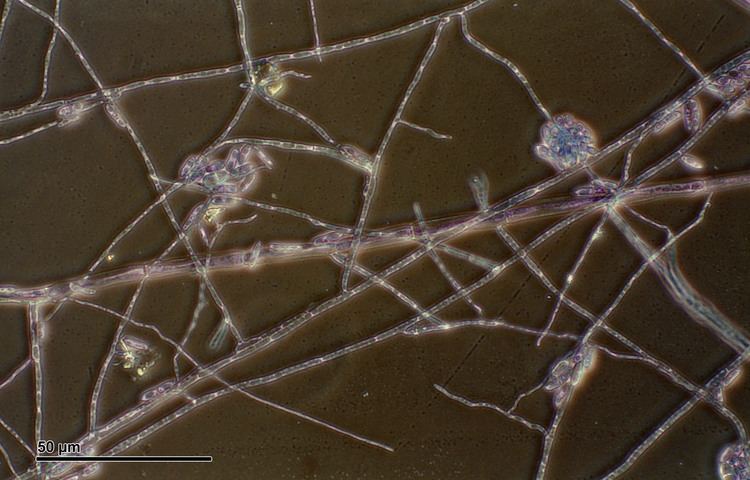
Some consumers of fusarium products have shown food allergies similar in nature to peanut and other food allergies. People with known sensitivities to molds should exercise caution when consuming such products.
Biological warfare
Mass casualties occurred in the Soviet Union in the 1930s and 1940s when Fusarium-contaminated wheat flour was baked into bread, causing alimentary toxic aleukia with a 60% mortality rate. Symptoms began with abdominal pain, diarrhea, vomiting, and prostration, and within days, fever, chills, myalgias and bone marrow depression with granulocytopenia and secondary sepsis occurred. Further symptoms included pharyngeal or laryngeal ulceration and diffuse bleeding into the skin (petechiae and ecchymoses), melena, bloody diarrhea, hematuria, hematemesis, epistaxis, vaginal bleeding, pancytopenia and gastrointestinal ulceration. Fusarium sporotrichoides contamination was found in affected grain in 1932, spurring research for medical purposes and for use in biological warfare. The active ingredient was found to be trichothecene T-2 mycotoxin, and it was produced in quantity and weaponized prior to the passage of the Biological Weapons Convention in 1972. The Soviets were accused of using the agent, dubbed "yellow rain", to cause 6,300 deaths in Laos, Kampuchea, and Afghanistan between 1975 and 1981. The "biological warfare agent" was later purported to be merely bee feces, but the issue remains disputed.
Following an outbreak of Fusarium oxysporum that affected coca plantations in Peru, and other crops planted in the area, the United States has proposed the use of the agent as a mycoherbicide in drug eradication. In 2000, a proposal was passed to use the agent as part of Plan Colombia. In response to concerns use of the fungus could be perceived as biological warfare, the Clinton Administration "waived" this use of Fusarium. A subsequent law passed in 2006 has mandated the testing of mycoherbicide agents - either Fusarium oxysporum or Crivellia papaveracea - in field trials in U.S. territory. Use of Fusarium oxysporum for these tests has raised concerns because resistant coca from the previous outbreak has been widely cultivated, and the fungus has been implicated in the birth of 31 anencephalic children in the Rio Grande region of Texas in 1991, the loss of palm trees in Los Angeles, and eye infections from contact lens solutions. The alternative Crivellia papaveracea is less well known; despite decades of study in the Soviet biowarfare lab in Tashkent, Uzbekistan, the relevant mycotoxins reportedly have not yet been isolated, named, or studied.
